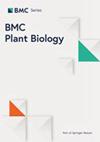Genetic resources of African mahogany in Brazil: genomic diversity and structure of forest plantations
IF 4.3
2区 生物学
Q1 PLANT SCIENCES
引用次数: 0
Abstract
African mahogany species (Khaya sp.) have been introduced to Brazil gaining increasing economic interest over the last years, as they produce high quality wood for industrial applications. To this date, however, the knowledge available on the genetic basis of African mahogany plantations in Brazil is limited, which has driven this study to examine the extent of genetic diversity and structure of three cultivated species (Khaya grandifoliola, Khaya senegalensis and Khaya ivorensis) and their prospects for forest breeding. In total, 115 individuals were genotyped (48 of K. grandifoliola, 34 of K. senegalensis and 33 of K. ivorensis) for 3,330 filtered neutral loci obtained from genotyping-by-sequencing for the three species. The number of SNPs varied from 2,951 in K. ivorensis to 4,754 in K. senegalensis. Multiloci clustering, principal component analysis, Bayesian structure and network analyses showed a clear genetic separation among the three species. Structure analysis also showed internal structure within each species, highlighting genetic subgroups that could be sampled for selecting distinct genotypes for further breeding, although the genetic distances are moderate to low. In our study, SNP markers efficiently assessed the genomic diversity of African mahogany forest plantations in Brazil. Our genetic data clearly separated the three Khaya species. Moreover, pairwise estimates of genetic distances among individuals within each species showed considerable genetic divergence among individuals. By genotyping 115 pre-selected individuals with desirable growth traits, allowed us not only to recommend superior genotypes but also to identify genetically distinct individuals for use in breeding crosses.巴西非洲桃花心木的遗传资源:基因组多样性和人工林结构
非洲桃花心木树种(Khaya sp.)在过去几年中被引入巴西,并获得了越来越多的经济利益,因为这些树种生产的优质木材可用于工业用途。但迄今为止,有关巴西非洲桃花心木种植园遗传基础的知识还很有限,这促使本研究对三个栽培品种(Khaya grandifoliola、Khaya senegalensis 和 Khaya ivorensis)的遗传多样性程度和结构及其森林育种前景进行了研究。对 115 个个体(48 个 K. grandifoliola、34 个 K. senegalensis 和 33 个 K. ivorensis)进行了基因分型,获得了这三个物种的 3,330 个过滤中性位点。SNPs 的数量从 K. ivorensis 的 2951 个到 K. senegalensis 的 4754 个不等。多位点聚类、主成分分析、贝叶斯结构和网络分析显示,这三个物种之间存在明显的遗传分离。结构分析还显示了每个物种内部的结构,突出了遗传亚群,尽管遗传距离中等或较低,但可以通过采样选择不同的基因型进行进一步育种。在我们的研究中,SNP 标记有效地评估了巴西非洲桃花心木人工林的基因组多样性。我们的遗传数据明确区分了三个卡雅树种。此外,对每个物种内个体间遗传距离的成对估计显示,个体间存在相当大的遗传差异。通过对 115 个具有理想生长性状的预选个体进行基因分型,我们不仅能够推荐优良的基因型,还能识别出基因不同的个体,用于杂交育种。
本文章由计算机程序翻译,如有差异,请以英文原文为准。
求助全文
约1分钟内获得全文
求助全文
来源期刊

BMC Plant Biology
生物-植物科学
CiteScore
8.40
自引率
3.80%
发文量
539
审稿时长
3.8 months
期刊介绍:
BMC Plant Biology is an open access, peer-reviewed journal that considers articles on all aspects of plant biology, including molecular, cellular, tissue, organ and whole organism research.
 求助内容:
求助内容: 应助结果提醒方式:
应助结果提醒方式:


